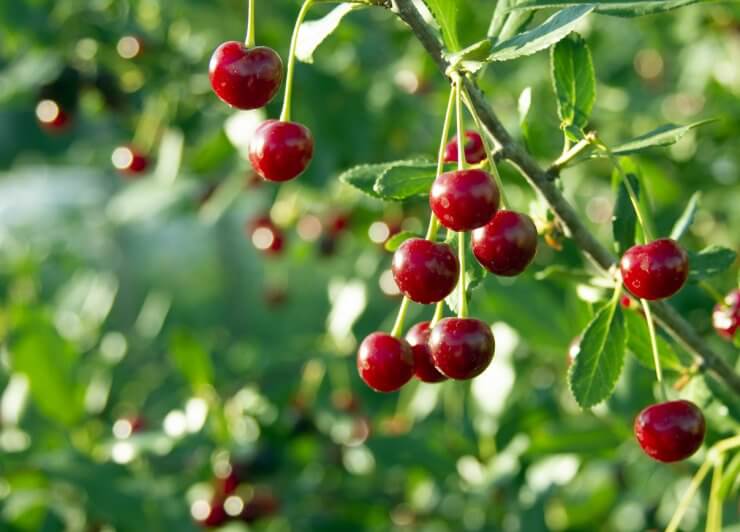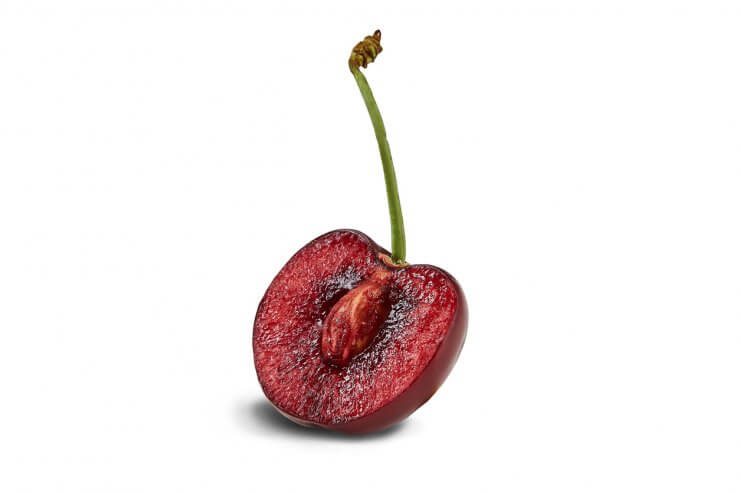Have you ever wondered if you can grow cherry trees from pits? Admittedly, this is a long process—up to seven years to fruit—but it can be done, and it’s much cheaper than buying bare-root or potted plants. The fun is in tending your pretty new cherry tree while you wait for it to fruit!
Keep in mind, though, many cherry varieties require a partner tree of a different variety to pollinate them. Two of the same variety will not work for cross-pollination, unless you have seed-grown trees. So if you’re planning to grow cherry trees from pits, you’ll need fresh local cherries, and two different types. Buying cherry trees is sounding more appealing by the minute, am I right? But if you want to take the plunge and grow from the pit, here’s how to do it!

1. Buy or pick locally grown cherries.
Start by buying some cherries fresh from a local source, not from the supermarket. Those cherries have been refrigerated and probably won’t germinate. And if you get them from a local farm, you’ll know the trees will be suitable for your climate.
2. Clean the pits.
After you eat the cherries, save some seeds and put them in a bowl of warm water, allowing them to soak for a few minutes. Then gently clean them to remove remaining bits of fruit pulp.
3. Dry the pits.
Spread the seeds out on a paper towel and let them dry for 5 days. They should be kept in a warm area, like a sunny windowsill. Then put them in a glass jar or plastic container with a tight-fitting lid and stash them in the refrigerator for 10 weeks. This mimics the winter cold they would go through in nature.
4. Grow your seedlings from pits.
After 10 weeks, take the cherry pits out of the refrigerator and let them come to room temperature, about three hours. You can then plant them in a small container with potting soil, planting two or three pits in each container. Put them in a sunny spot and keep them moist, but not wet.
5. Thin your cherry seedlings.
Once you have seedlings about two inches tall, thin them so only the tallest remains. Keep them in a sunny spot until spring has arrived and the last danger of frost has passed.
6. Plant your seedlings.
Plant them 20 feet apart, and keep the site protected from trampling by marking it with poles or sticks.
You can also skip the refrigerator process and plant the seeds directly outside in the fall, but you’ll need to plant a few more than you want, because you won’t get as many seeds to sprout. You can plant them wherever they’ll be safe from wind or foot traffic because you’ll transplant them later to a permanent spot (when they’re 10-12 inches tall). Put a light layer of mulch around them.
7. Fertilize your cherry trees every year in the spring.
Fertilize your trees each spring until the tree starts to bear fruit, then fertilize only after harvesting each season. Water your cherry trees often.
8. Cover your cherry trees.
Protect from wildlife that might want to eat the plants by wrapping loosely in burlap in mid-to-late autumn, then removing the burlap in early April. Keep doing this for the first two to three years to protect the young bark, which is tasty to many critters.
9. Enjoy the bounty of your cherry trees!
After about 7 years, your little cherry pits will finally be making fruits of their own. Enjoy your harvest!

Learn How to Grow Cherries at Home
Growing cherries from pits takes a long time, but that’s not how most people grow cherry trees. Learn all there is to know about growing and eating cherries in our All Things Cherry, the Sweet and the Sour Gardening Guide! You’ll learn all about delicious cherries, including the history, planting bare root or potted trees, watering, fertilizing and pruning these beautiful trees. Then you’ll get six amazing recipes for using your harvest—as easy to make as they are delicious to eat. You can even check out the nutritional value of cherries! Get it all in the All Things Cherry, the Sweet and the Sour Gardening Guide right now.
Have you ever grown cherry trees from pits? How long did it take to get fruit? Please share your tips for growing trees from seed in the comments.


 Previous
Previous


I’m looking forward to this. You’re right, I have wondered and tried, but did not do the frig step — hence my failure. If I start now, April 2022, I’m ready to plant for August which gives them some heat for the brutal winter. But do you get dwarf or full size ? I imagine full as that’s what they came from. This article doesn’t say either…https://tinyurl.com/z83uu3k8